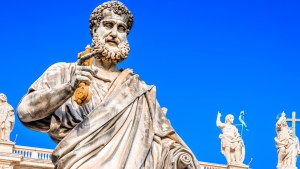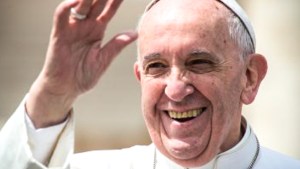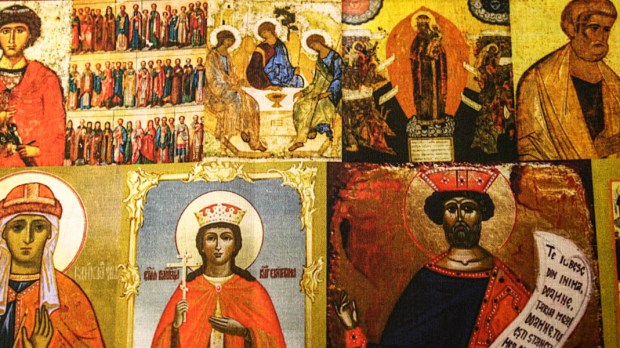On May 12, 2013, the Catholic Church simultaneously canonized 802 saints.
Antonio Primaldo and 799 of these future saints lived in the town of Otranto in the south of Italy in the year 1480.
The Ottoman Turks had taken over the city and demanded these “infidels” convert to Islam. They refused and were all murdered. In addition to those 800, Blessed Maria Garcia Zavala of Mexico and Blessed Laura Montoya of Columbia were also canonized on that same day.
The 802 newly canonized saints joined the ranks of more than 10,000 other saints who are venerated in the Catholic Church.
It’s known as being “raised to the altars” or being recognized as a saint with a capital S, to distinguish them from all the rest of the human people in heaven (who are also saints, though not angels), but haven’t been added to the Church’s “canon” of saints, or in other words, canonized.
The process of canonization is today a careful, step-by-step, and often lengthy process.
It wasn’t always that way. In the early years of Christianity many different communities honored or venerated hundreds of people whose stories were not backed by solid fact.
Some stories were made up. For example, St. George the Dragon Slayer is from the 3rd century. He is honored by both Muslims and Christians. Is the story fact or legend?

Read more:
These saints were professional dragon-slayers
In the French countryside St. Guinefort is venerated as the protector of babies. It seems that Guinefort saved a baby from a snakebite. The only problem: Guinefort was a dog.

Read more:
Of the 266 men who have been pope, how many were canonized saints?
The first saint formally canonized was St. Ulrich of Augsburg. He was canonized by Pope John XV in 993. During the 12th century, the Church, realizing we needed an orderly system, began to put a process in place. In 1243, Pope Gregory IX proclaimed that only a pope had the authority to declare someone a saint. The basics of that process continue to exist to this day.
While we can’t go into the intricacies of each step in the process, here is an overview:
The 5 steps
So, what is the actual process on the road to canonized sainthood? There are five steps in the journey. The first step begins right in the neighborhood where the proposed saint lived and was known.
After a person has been dead for five years (this time frame may be waived by the pope), friends and neighbors may get together and document all they can about that particular person. They would then present their evidence to the local bishop, requesting he begin an investigation into the person’s life.

Read more:
Interview: The husband of Chiara Corbella on his wife’s sacrifice and possible canonization
If the bishop feels that a case can be made, and that this “cause” is worthy of moving forward, he may appoint a “postulator” to represent the cause. Once a cause is opened, the would-be “Saint” receives the title Servant of God. (Here, we should note the difficulties inherent in the terminology. The person in question, if his soul is already in heaven, is already in fact a saint. All the souls in heaven are saints. However, he has not been officially declared a saint. Hence one way of distinguishing between these two is by capitalizing the S, with canonized saints being referred to as saints with a capital S.)
Returning to the diocese: Various investigations will proceed, and a diocesan tribunal will examine results. The local bishop will ultimately decide if the results of the investigation warrant being sent to Rome. (The findings are compiled in what is usually a huge, several-volume document.)
This evidence now goes before the Vatican’s Congregation for Saints’ Causes.
A Positio summarizing the life and virtues of the Servant of God is properly prepared. A theological commission reviews this material and votes affirmatively or negatively on the cause, which (if affirmative) is then passed to the bishop-members of the Congregation. The Congregation even has a person — once known as “the devil’s advocate,” now the Promoter of Justice — who raises questions and objections about the candidate. The Congregation must be sure before moving forward. Their votes determine whether the would-be Saint is passed on to the Holy Father with a recommendation that he decree that this person lived a life of Heroic Virtue.

Read more:
Now that’s a lotta saints! Vatican’s “saint-maker” to retire after 913 canonizations
If the pope gives this decree, recognizing that a life of heroic virtue was in fact lived, then the person is now known as Venerable, and their cause moves on to the next step: Beatification.
Except in the cases of martyrdom, beatification requires the recognition that the person has obtained, through his or her intercession, a verifiable miracle.

Read more:
Giving your life for another can lead to canonization, pope decides
The candidate’s character and holiness have already been established, but having a miracle attributed to someone’s intercession can take centuries. Both a theological and a scientific commission have to examine the case.
Once a miracle is verified, thereby indicating that the person is in the presence of Christ and able to intercede for us, he or she is beatified and is henceforth known as Blessed.
Lastly, there is the step of Canonization. In order for this final step, a second miracle must be verified.
Once a final miracle is verified, the pope can determine when the Blessed will be recognized as a canonized saint.
It should be noted that with canonization, the Church affirms for the faithful that a particular soul is in heaven, enjoying the beatific vision, and worthy of imitation.
While the Church has made this affirmation thousands of times over the years, She has never affirmed — and will never affirm — that any soul is in Hell. From Judas, to the most hardened sinner of our own day, the Church hopes that in some way the mercy of God was able to prevail and the sinner accepted divine forgiveness.
To all you saints above (and those in the queue), please pray for us all.

Read more:
Do Catholics worship saints?

Read more:
Pope: What would have happened if Judas had met Our Lady on his way to kill himself?

